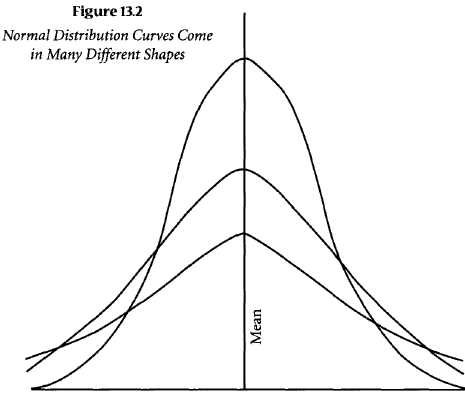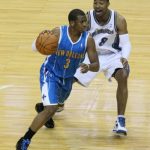 All our readers know this is a basketball training website. Some of you may be wondering why we are venturing into advanced statistics, and some of you might not even know what advanced statistics are.
All our readers know this is a basketball training website. Some of you may be wondering why we are venturing into advanced statistics, and some of you might not even know what advanced statistics are.
A little background…
Advanced statistics got their start in baseball. Guys like Bill James analyzed loads of data on baseball players in an effort to see which players really were the best, which statistics were the most important, and to answer questions like “Who was faster Willie Mays or Mickey Mantle”. However, they didn’t just want to base it off of what they saw happen or the big name statistics like HRs and RBIs, because they don’t tell the whole story. They wanted to answer objective questions with real data. In baseball this study of advanced statistics is called Sabermetrics (SABR Metrics – Society for American Baseball Research). The question regarding Mays/Mantle isn’t as simple as you might think. Sabermetrics doesn’t look at a player’s 40-yard dash to determine who is faster. They look at things like how many doubles did they hit, now many triples, how many stolen bases, and other factors to try to figure out who USED their speed and was faster in a “baseball” sense vs. traditional “speed”. The study of advanced statistics eventually caught on in basketball (APBRmetrics – Association for Professional Basketball Research).
Advanced statistics in basketball provides more of a challenge because it is less of an individual sport. In baseball the interactions are either individual or between 2 players (like a pitcher and a batter). Basketball is more complicated because the interactions are between 10 different players. The practice of advanced statistics is VERY mainstream now, the 2011 film “Moneyball” is based on the real-life story of how the Oakland A’s became one of the first teams to base their personnel decisions largely on Sabermetrics. There is even an annual MIT Sports Analytics Conference each year headlined by guys like the journalist/author Bill Simmons, Rockets GM Daryl Morey, Mavs owner Mark Cuban, and more. Most teams have stat guys (or whole teams of statisticians) to monitor their own team or other teams in the league (you can get a taste of this in this post we wrote a few weeks ago).
So why is The World of Hoops, a basketball training site, covering this…Well, they are a little more closely related than you might think. Here are a few of the reasons:
- Our readers include parents, players, coaches, and fans….so while basketball training is our focus; there are groups of our readers that advanced statistics could greatly help out.
- What is the most important skill a basketball player can have? Don’t know? What if I asked you how efficient you are as an offensive player, or as a defensive player, do you know? Do you have any proof of it besides your scoring average (which doesn’t tell the whole story?) or your steals/blocks? Well, advanced statistics can help answer that question AND can help you understand where you should FOCUS your training efforts.
- It is EXTREMELY interesting.
Advanced statistics for basketball started to gain traction in the 90’s with guys like Dean Oliver and John Hollinger. In ’04 Oliver was hired by an NBA team as a full-time consultant. Daryl Morey was the first to make it BIG TIME…despite having no playing, coaching, or scouting experience the Rockets made him GM in ’06.
One of the main pillars of APBRmetrics is to break down statistics into more meaningful chunks. It looks at player or team stats per possession or per minute. The thought being that any team can run up a score by speeding up the tempo of the game, shooting quickly and running the floor. But what do they do over 100 possessions and how does that compare to a team that plays slower. If you look at two teams over 100 possessions… who is more efficient? What if you compare all teams? Similarly, if you are looking at players, you can’t handicap a player for not getting to play as many minutes as others…so how efficient is he per minute played?
One other strategy of APBRmetrics is to gauge how a good a team is under certain circumstances (offense/defense, which players are on the court, etc…) and if one team seems to perform differently with a certain guy, is that caused on offense or on defense? This answer all sorts of questions like:
- Does a certain player make the team defense better?
- Is someone as talented offensively as it seems like they are?
- What is the best combination of 5 guys a coach can put on the floor?
In the next post(s), We will cover:
- What is the most important single stat for a player (important question for basketball training)?
- How to start breaking your team down on a possession basis (with the stats you already have) (it’s not that hard)?
- How to calculate your offensive and defensive efficiency (and how to compare to other teams in your league/conference/etc.)?
- New ways to interpret stats you already track.
- Some new stats you might want to begin taking.
- How good is your coach? – OR – How good are you as a coach?
 He has 25 years of experience playing basketball, training basketball players, and coaching basketball. The World of Hoops provides intelligent and intense basketball training to take basketball players to the next level.
He has 25 years of experience playing basketball, training basketball players, and coaching basketball. The World of Hoops provides intelligent and intense basketball training to take basketball players to the next level. The Importance of Switching Gears
The Importance of Switching Gears How Bad do YOU Want it?
How Bad do YOU Want it? The World of Hoops Warm-up
The World of Hoops Warm-up Winning On The Road
Winning On The Road




Speak Your Mind